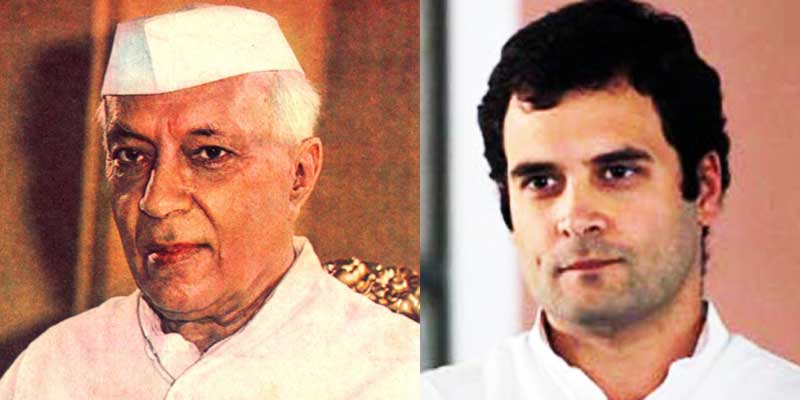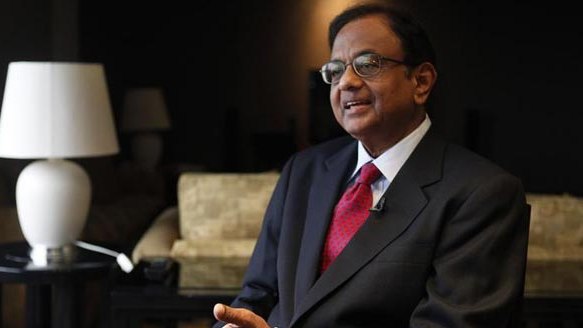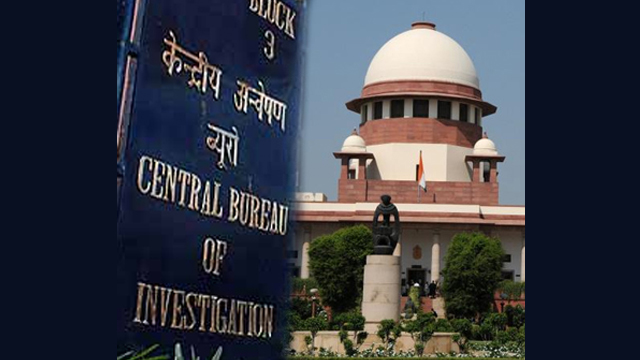If tomorrow the Congress is limited to two digits, it will put the final nail in the coffin of the dynasty-rule which has no place in the democracy.
The election results are barely 24 hours away and may announce the demise of the grand old Congress party. But it will not be the first time the Congress has fallen. Rather, it will be the end of the gradual decline that the Congress has been witnessing within.
With this it will be a decline of the Nehru-Gandhi dynasty which has become a synonym of the Congress.
The dominance of Congress party over the politics of the country continued after the independence in 1947. It was despite the fact that Mahatma Gandhi wanted to disband Congress to start a democracy in its real sense. But Jawaharlal Nehru was appointed as the Prime Minister of the country by Lord Mountbatten after the first general elections were held.
The dynamism of Pandit Nehru’s personality and the utter faith of people in him made the great leader that we know him as today. He may have had his own shortcoming in the governance and decision making, but that did not diminish the position of the Congress party.
Even after Pandit Jawahar Lal Nehru’s death in 1964, the consecutive Prime Ministers of the country hailed from the Congress party. Whether it was Lal Bahadur Shastri, or twice acting PM Gulzarilal Nada or the ascendance of Indira Gandhi in 1966 after Shastri died in office, it was the era of Congress.
The rise of Indira was not to be taken as the rise of dynasty at first. It was because of her own submission to work under Shastri as a cabinet minister after her father, Nehru, died. But the changes started to begin when she broke away from the old Congress to form her own Congress (Indira) based on socialist ideologies after taking up the post in 1966. It was the first assertion of her belief that only a Nehru-Gandhi had a right over the Congress party.
She received the first reality check when Congress lost 60 seats in 1967 Lok Sbaha elections and she had to accommodate the leader of ante-Congress Morarji Desai as the finance minister of her new government. Also, the Congress party lost assembly elections bitterly. In nine states, a non-Congress government was formed.
It had tripped, yet the Congress party was saved from a fall.
The period of 1967-75 saw major economic progress under Indira. She also worked quite hard on the geo-strategic and foreign relations on the country. The defense of the country was the best and the green revolution had ensured food security to a great extent. There were so many good things happening at that time. The rise of India was ascertained under her government.
But the two consecutive terms perhaps fuelled the ‘I’ of Indira even more and this was the beginning of the fall of Congress.
The Emergency of 1975-77 showed us how the ‘Nehru-Gandhi’ dynasty was at play when it came to politics and governance of the country. The two non-Congress governments of Morarji Desai (1977-1979) and Charan Singh (1979-1980), though short-lived, displayed in the aftermath of Emergency that the country can have alternatives.
In 1980, Indira came back to power and the Congress dominance was restored. Within few months of her taking the government, the other ‘active’ Gandhi in politics – Sanjay – died in an unfortunate plane accident. After her assassination in 1984, the reluctant Gandhi – Rajiv – joined politics, became PM on the sympathy wave and ensured another five years of dynasty politics in the country.
The riots of 1984 during Rajiv’s government after Indira’s assasination and the subsequent bad governance decisions by him led to the end of first phase of dynasty rule over the country. The loss of Rajiv-led Congress in elections of 1989 was a big proof of that.
After two short-lived governments of VP Singh and Chadrashekhar at the centre, the Congress party returned but sans the Nehru-Gandhi dynasty. Rajiv was assassinated in 1991 and the same year PV Narsimha Rao became PM. He steered the country towards economic liberalisation and prosperity.
Then came the AB Vajpayee government in 1996 for 13 days followed by Janata Dal governments of HD Deve Gowda and IK Gujaral in 1996-98 but the Congress party was nowhere in sight.
The next Vajpayee government, which marked the actual beginning of coalition era in the politics, came back in 1998. By then, the hiatus of Nehru-Gandhi dynasty was being felt by the Congress and it tried to restore it by making Rajiv’s widow, Sonia Gandhi, the president of the party.
Surprisingly, the Congress party won 2004 general elections and Sonia was to be almost instated as PM. But she backed down the last minute and the government was formed under the leadership of Manmohan Singh. One would not have called it a return of the ‘Nehru-Gandhi’ dynasty but it proved to be the same in every sense later on.
The power that Sonia Gandhi wielded put her at the same footing as Indira in the political scenario of the country. She was being seen as the one who had the last word when it came to policy decisions, party decisions and other political decisions. The first phase of Congress-led UPAI was all about it. We get the bigger picture from PM Singh’s former media advisor Sanjaya Baru’s book, The Accidental Prime minister: the making and unmaking of Dr Manmohan Singh, quite clearly.
Another thing which marked the continuance of this Nehru-Gandhi dynasty was the entrance of another reluctant Gandhi – Rahul – in the political space and his rise to a powerful position in the party in no-time. But the people had started to see through it by then.
Although the controversial UPAI, which was tarnished by corruption cases, survived the election of 2009 and UPAII was formed, the matter was out of hand for the Nehru-Gandhi dynasty. Soniya continued to handle PMO and take key policy decisions. The failure of the UPA to lift up the economy under an economist’s government and put a plug on various corruption cases proved to be fatal. The manifestation was the BJP and new alternative AAP’s victory in the Delhi assembly elections where Congress was ruling from the past 15 years.
The several bloopers that Rahul put on display and his sheer political-illiteracy was another reason for the fall of Congress and the ‘Nehru-Gandhi’ dynasty. He does not have an iota of the aura that the Nehru-Gandhis have had in the past.
The falling health of Sonia had added to the tension of Congress which was trying to put confidence in Rahul by saying that they were ready to work under him even when he seemed completely incompetent to do so. People had Arvind Kejriwal who, at almost same age as Rahul, seemed more promising.
Some within Congress proposed the name Rajiv-Sonia’s daughter, Priyanka Vadhera, several times. Manu used ti think that she is better that Rahul. But she was never given more space than Raebarelli and Amethi – the stronghold of Nehru-Gandhis.
Although the Congress tried to present her as the second Indira due to her uncanny resemblance to her grandmother, but she lacks the mettle to become Indira and there Congress failed.
Also, her husband Robert Vadhera came under severe criticism for the cases of land-grabbing and corruption. The loss of Congress in the UP assembly elections under her leadership proved that she was no better than Rahul. In the recent Lok Sbaha elections too, Priyanka lowered the level of political discourse due to the sheer amount of ignorance and incompetence.
The rise of BJP’s Narendra Modi as a cult in the country and his shining resume has put the Congress and Nehru-Gandhi dynasty at a tight-spot. The Modi-wave has swept the country and there is little doubt that Congress will remain united after the election results are announced. If tomorrow the Congress is limited to two digits, it will put the final nail in the coffin of the dynasty-rule which has no place in the democracy.
The Congress has fallen…
P.S. Rahul Gandhi did not attended the farewell dinner for PM Manmohan Singh, hosted by his mother and Congress president Sonia Gandhi, yesterday. Sources say he is out of the country.





